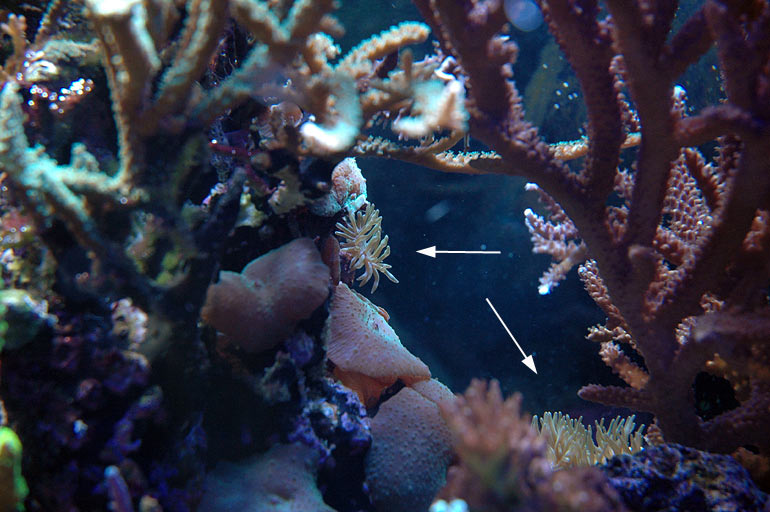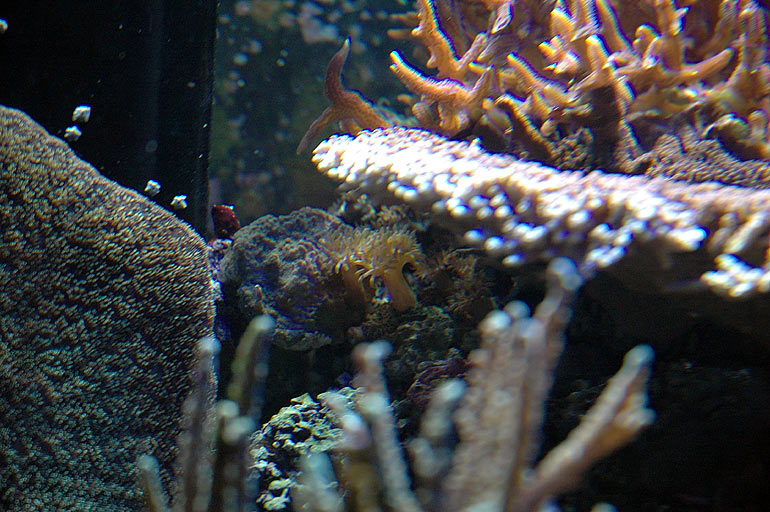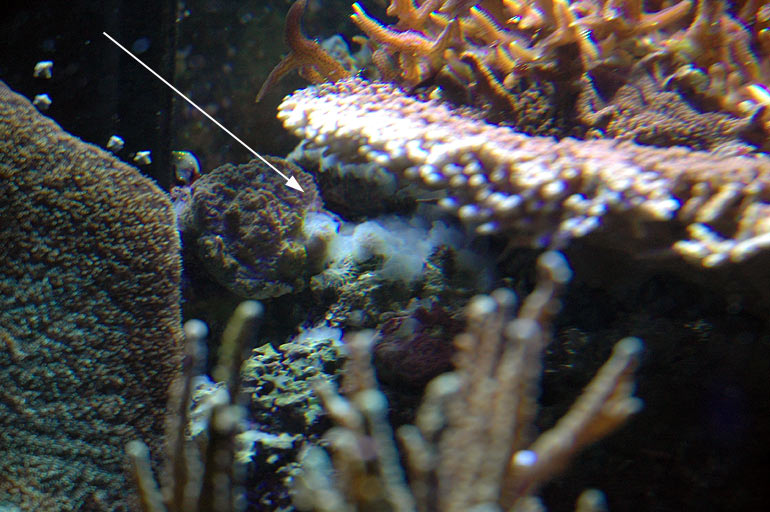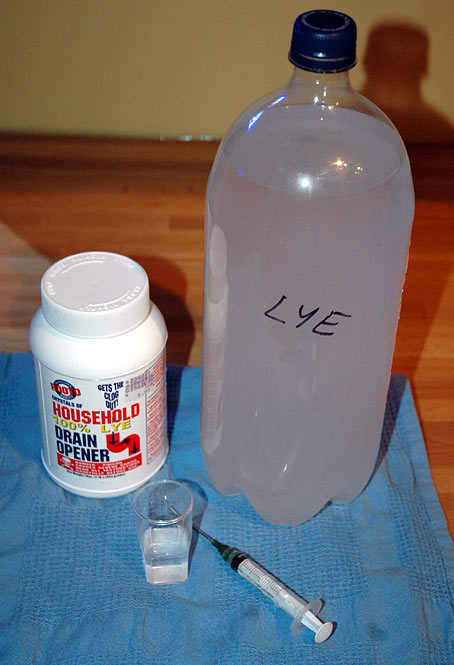
So here's the premise. Mix up lye (Sodium hydroxide) with water, and attack those pest anemones. Sounds simple, and it's cheap!
20 years ago when I started stripping, I used to buy Lye at the supermarket and used it to melt the wax on commercial flooring prior to scrubbing it with a buffer. It was very cheap at about $1.37 a jar. Never mix it with hot water, because the fumes will rise quickly into your lungs. Don't splash it, don't drink it, don't get it in your eyes. Rinse it off your flesh, etc. I never had a problem, and it was a very inexpensive product for what I was doing. Years later, I abandoned it; I used commercial floor stripping products on the market because they worked better and were less noxious. What else is lye used for? Many years ago, it was used to make bars of soap. For the most part, it's sold as a drain opener primarily. And it kills aiptasia, majanos, and other stuff (I bet), you'll see.
Here are a few pictures before I get into the actual description of the process.
Before:

After:

Before:

In the process:

Got your interest yet? Here's my 'kit':

The recipe is pretty simple. Buy some Rooto at your local hardware store. The jar cost me $3.99. Take a third of a cup of the Rooto-branded lye product, and add it to 2-liters of water. I used cold tap water. I mixed up the lye with some water in a smaller container, then poured that solution into a 2-liter bottle, then filled the bottle up the rest of the way, capped it off, and shook it up well. Done.
Turn off all the pumps in the display tank. The goal it to apply the lye solution on the pest and not on other stuff. It comes out in a cloud, and settles on the spot in question. If it lands on something you care about, a turkey baster's puff can quickly disperse it to avoid harming the coral.
I used the syringe that came with a bottle of Aiptasia-X because of the nice metal tip that allows me to aim it better. Each time it was empty, I'd walk over to the 2-liter bottle on the table and draw up more solution, then squirt the stuff over the next pest I could find. The aiptasia and the majanos were quick to retract from the stuff, but it was already too late. It definitely affected them, and it wasn't necessary to inject them or coat them. I did bury a few just because it made me feel better. It seems to work on those pests that are on a vertical wall, usually hard to get to. The lye seems to work merely with proximity.
10 to 15 minutes later, turn the pumps back on. Rinse out the syringe and clean up the work area. Check out your tank and see how the stuff you applied has blown off, scattering into flakes everywhere that can be skimmed out. There's no reason to worry at this point, as it has been fully diluted by the water in the system.
The next night, I re-treated some that survived although they looked terrible, balled up or half destroyed. I also applied some to the others I'd missed the night before. Like anything, the trick is to keep trying to eradicate these pests until they are all gone, or they'll simply return later. So, don't think of this as a one-time application because it isn't.
Here are a few things for you to consider:
- If you care about your countertop and / or furniture, protect it from any drips of the lye solution. Put down a towel first, as a preventative measure.
- If you have a lot of these in your tank, treat an area, not the entire reef. Why risk overdosing the tank with too much Sodium hydroxide in one session? Be reasonable, and do a little bit daily. Once the bulk of them are gone from multiple treatments over a week's time, then you can focus on any stragglers in one session without risk to your tank. If you have a nano tank, don't treat all of them in one session. Use some common sense.
- Don't have the bottle too close to your tank, as you don't want to accidentally spill it into the display or the sump. Bring a small amount in a tiny container, like a test kit beaker (pictured above). If it were to topple over, there wasn't enough in there to hurt my tank.
- Don't inhale the fumes from the lye mixing up; it'll make you cough.
- It will warm up as it mixes, which is normal.
- Shake up the bottle each time you commence, so it is fully mixed and not settled out.
- One jar will last you forever. I used 1/3 of a cup, and made 2-liters of solution! I won't need to use that much even with the infestation I've been tolerating. I doubt I'll use a full cup of solution, actually.
From what I've seen so far, I think it is a good solution, if you'll forgive the pun. I'll be sure to update this with more information in the days to come.
If you would prefer a different option that seems safer, choose your poison:
Commercial products
Aiptasia-X
Joe's Juice
Stop Aiptasia
Household products
Lemon juice
Vinegar
Muriatic acid.
Kalkwasser paste (pickling lime mixed with water)
Boiling water
I've used them all with varying results. I'm liking the lye system. Aiptasia-X
Joe's Juice
Stop Aiptasia
Household products
Lemon juice
Vinegar
Muriatic acid.
Kalkwasser paste (pickling lime mixed with water)
Boiling water

.




 Menu
Menu






Reef Addicts Message